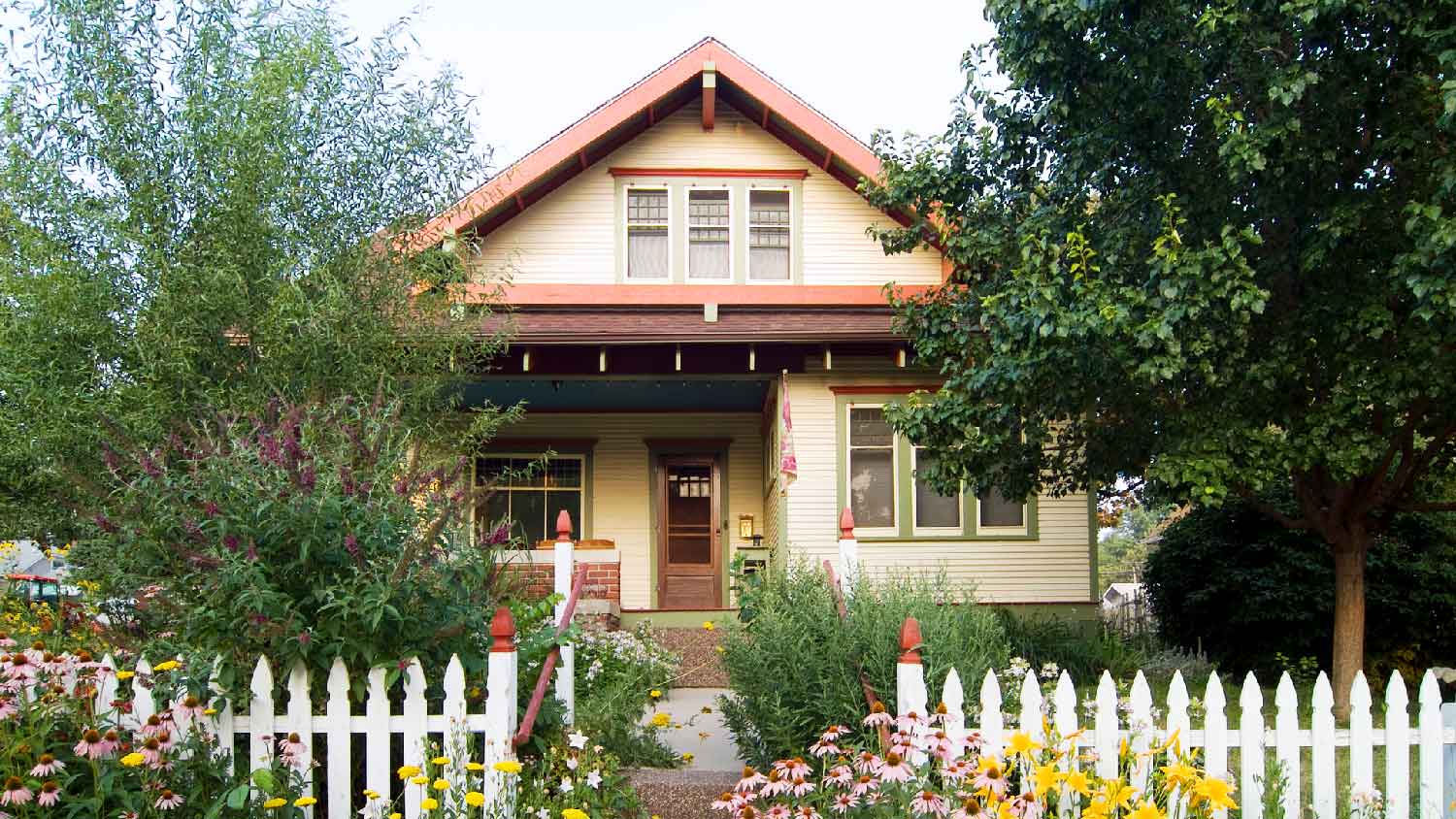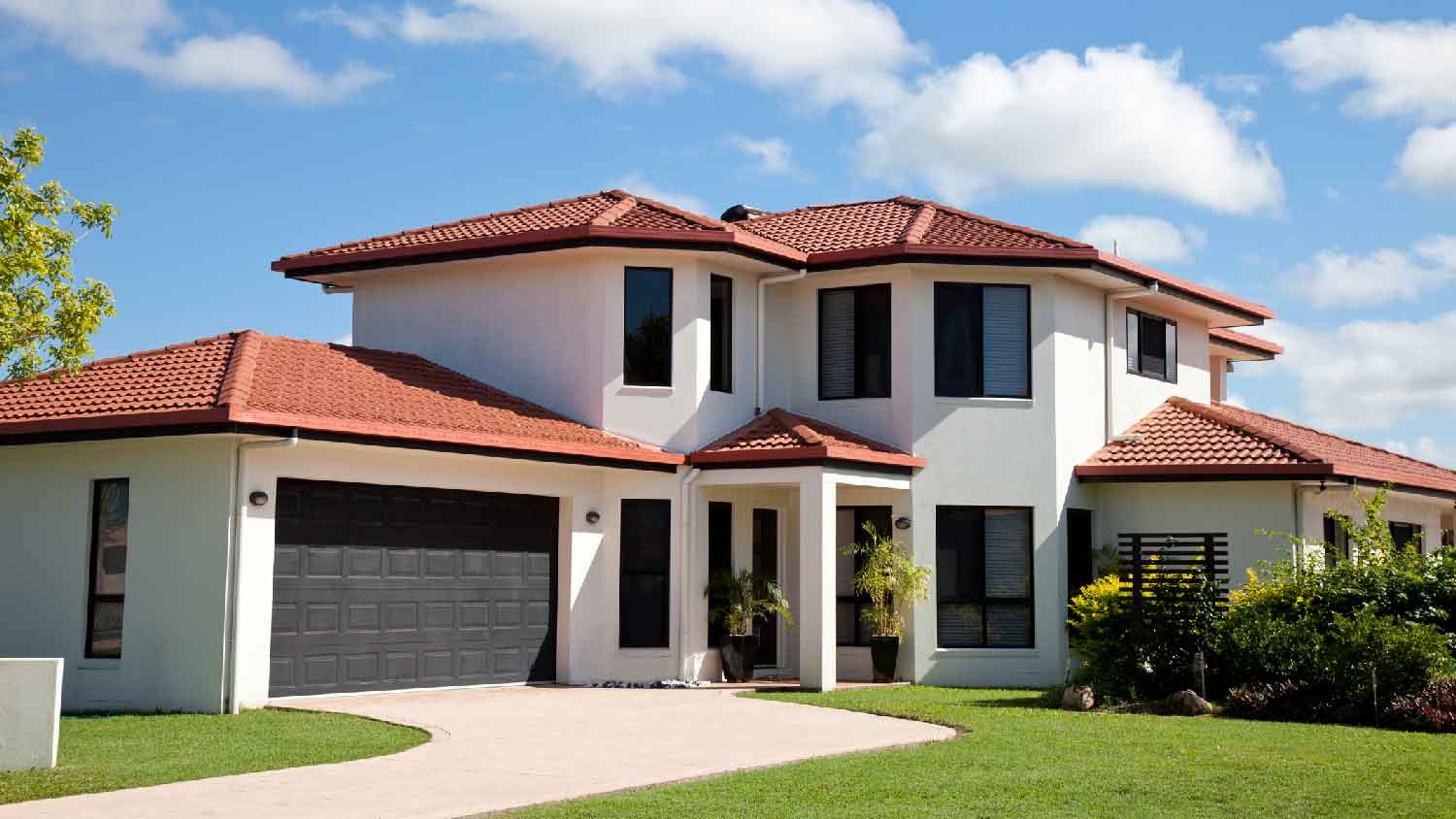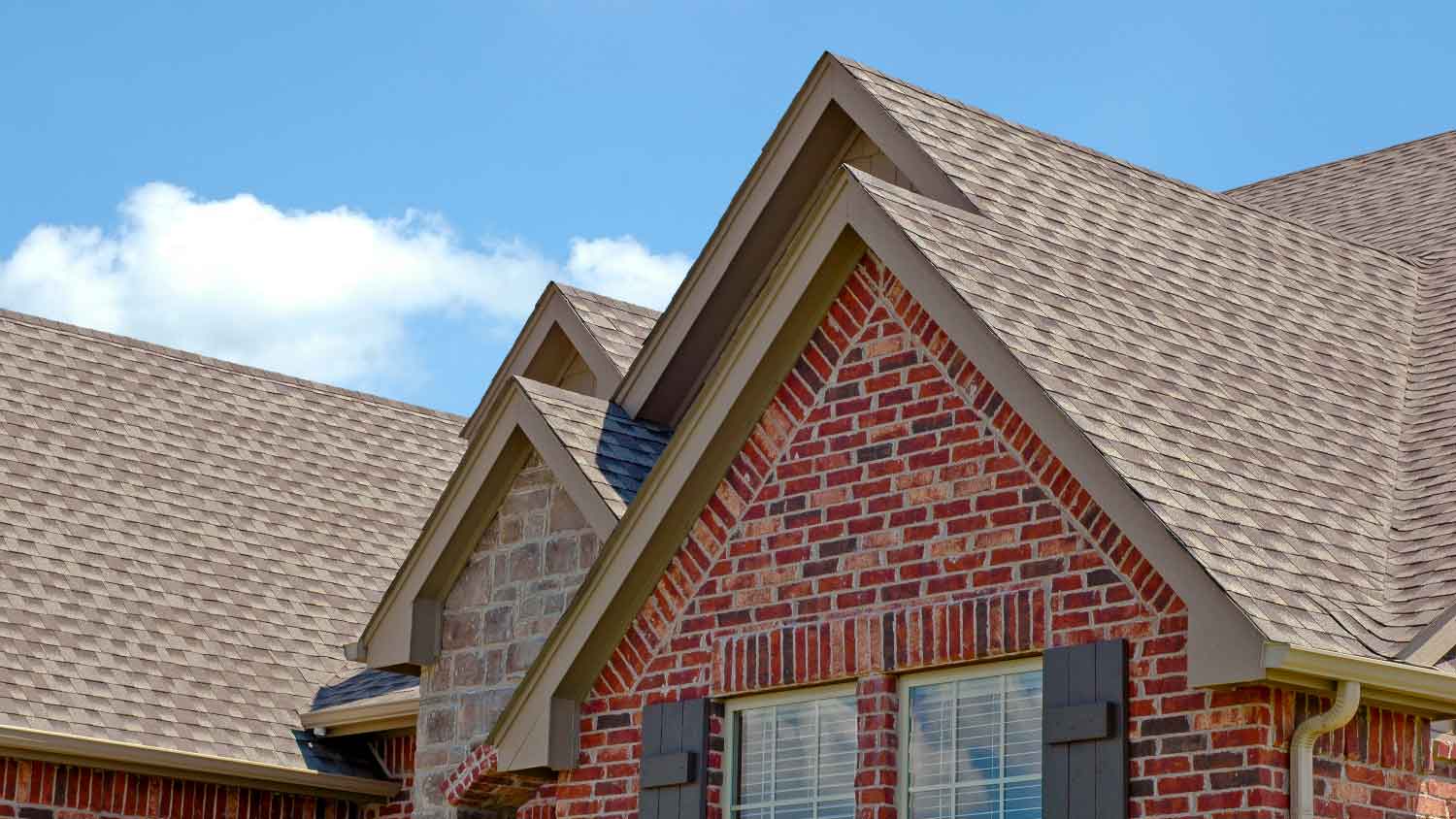Your roof’s style might not be something you think about at all, but having the right style roof is a critical part of protecting your home from the elements. When it comes time to build or replace your roof, you’ll need to consider the climate, your budget, and even how much attic space you want when deciding whether a gable roof or hip roof is right for your home. Learn the difference between a gable roof and a hip roof so you can keep your home safe and protected.
Gable Roof vs. Hip Roof: Key Differences

Photos: JamesBrey / iStock / Getty Images Plus / Getty Images, JamesBrey / iStock / Getty Images Plus / Getty Images
Gable and hip roofs are two popular roof styles, but their differences are mainly the number of sloping sides each one has. Gable roofs are the more common type in the U.S. and feature two sloping sides that meet at a ridge. On the other hand, hip roofs are less common and have four sloping sides that join together at the rooftop.
What Is a Gable Roof?

Photo: Douglas Keister / Corbis Documentary / Getty Images
A gable roof consists of two sloped sides that meet at a peak and leave open, flat ends called “gables.” Gables are made of the home’s siding material and extend all the way up to the roof’s peak. This roof style is common in New England and other snowy areas. Types of gable roofs include the open or classic gable and the cross gable, which combines two gable sections set at right angles to each other. Before deciding if this style is right for your home, consider some of the pros and cons of gable roofs.
| Pros | Cons |
|---|---|
| Better snow and ice protection | Poor wind protection |
| Increased ventilation | Less curb appeal |
| More attic space | More susceptible to shingle damage |
| More cost-effective | More difficult to install |
Best for:
- Homes in snowy climates
- Homeowners who want to maximize attic space
- Homes that need additional ventilation
Pros of Gable Roofs
Gable roofs are often found in colder climates due to their superior performance in safely shedding snow and ice. These roofs have fewer places for snow and ice to collect and are often built with a steeper slope, so snow slides off faster. They also offer interior benefits—their open sides allow you to install additional ventilation like windows or gable vents, and the vaulted shape provides more attic space.
Gable roofs are one of the most cost-effective roof options. The price of a new roof will always depend on your home’s size, the materials used, and more, but a gable roof will cost less than a hip roof because roofing materials will only be installed on two sides rather than all four (or more).
Cons of Gable Roofs
Gable roofs may perform exceptionally against snow but don’t fare as well when faced with heavy winds. The exposed ends of the roof allow wind to hit the gable and be forced upward into the roof, which can lift the roof and cause extensive damage, including lost shingles and roof separation. Installation is also more difficult since the wall heights vary to accommodate the gables.
Regarding looks, gable roofs are plainer than hip roofs, and their simple appearance may be less aesthetically appealing to some homeowners.
What Is a Hip Roof?

Photo: pamspix / E+ / Getty Images
A hip roof is sloped on all sides with no open ends, so the walls meeting the roof are the same height on every side. Hip roofs come in many different styles, from a classic pyramid to a mansard roof, which has two slopes on each side with a steeper lower slope.
| Pros | Cons |
|---|---|
| Better wind protection | Poor snow and ice protection |
| Easier to install | More expensive |
| Consistent eave and gutter height | Reduced attic space |
Best for:
- Homes in areas prone to hurricanes and high winds
- Homes designed for low-sloped roofs
- Homeowners who want to boost curb appeal
Pros of Hip Roofs
For homeowners who frequently face hurricanes and high winds, hip roofs offer solid protection from wind-related damage. Because hip roofs don’t have open sides, there’s no flat face for wind to catch the roof’s edge and force it upward. Some insurance companies even offer discounts for homes in high-wind areas with hip roofs installed.
Hip roofs are easier to install than gable roofs since all supporting walls are the same height, and the roof requires less diagonal bracing for stability. Gutter installation is also easier on a hip roof due to the consistent height around the house.
Cons of Hip Roofs
Although they’re easier to install, hip roofs are more expensive than gable roofs because they use more roofing material on the additional sloping sides. The lack of gables also reduces available attic space and decreases ventilation since the roof slopes on all sides.
Hip roofs are ideal for windy climates but are less effective against snow and ice. The lower pitch and additional places where snow and ice can collect increase the odds of water damage since snow and ice remain on hip roofs longer than they do on gable roofs.
Gable Roof vs. Hip Roof: Key Characteristics, Compared

Photo: rickmartinez / iStock / Getty Images Plus / Getty Images
Installation Cost: Gable Roof
They may be a little more complex to install, but gable roofs are the more cost-effective option since you’ll use less roofing material. Look for a local roofer with experience installing gable roofs to ensure the job is done right.
Maintenance Costs: Hip Roof
The lifetime cost of a hip roof may be lower than that of a gable roof, even though hip roofs are more expensive to install. Hip roofs are less likely to need shingle replacement due to wind damage, and insurance discounts for a hip roof in a windy area could help your return on investment over the life of your roof.
Appearance: Hip Roof
A hip roof will boost your home’s curb appeal with its symmetrical look and eaves that fully surround the home. Gable roofs have a simpler appearance and expose far more of the home’s siding material, breaking up the visual line of the roof.
Weather Resistance: Tie
The style of roof that’ll offer the best protection from the elements depends on where your home is and what kind of weather you experience. In cold, snowy climates, a gable roof will stand up better to the weather, and in windy, hurricane-prone areas, a hip roof will better endure the harsh winds with less chance of damage.
Life Span: Hip Roof
Hip roofs tend to last longer than gable roofs, which makes sense considering they cost more to install and are more durable. Hip roofs last 50 years, while a gable roof lasts about 40 years.
Ease of Installation: Hip Roof
Even though it uses more roofing material, the consistent wall height of a hip roof makes it much easier to install. Hip roofs are easier to frame than gable roofs—an experienced roofer can install a hip roof much faster, minimizing the amount of time you need to deal with the disruption of roof work.
Attic Space: Gable Roof
If you’re looking to maximize your usable attic space, a gable roof is the way to go. With a higher pitch and more accessible space, a gable roof allows you to turn otherwise wasted attic space into functional storage or even additional living space.









